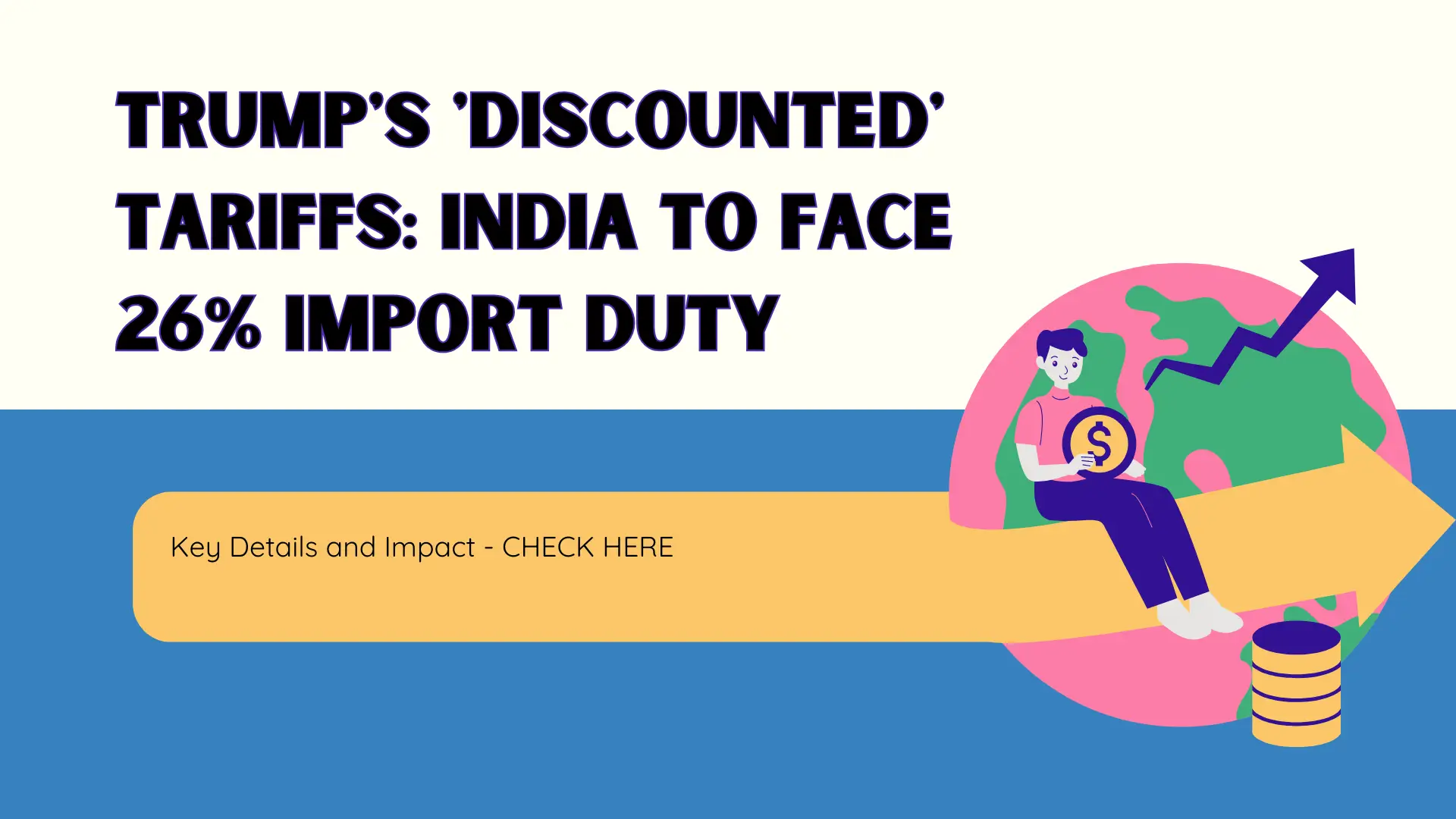The United States has introduced new tariffs on imports from various countries, including India. Under this policy, India will now face a 26% tariff on goods entering the US. This move is part of President Donald Trump’s “reciprocal tariffs” strategy, which aims to balance trade by imposing duties similar to what other countries charge on US products.

Key Highlights of Trump’s Tariff Announcement
- India will be charged a 26% tariff on its exports to the US.
- A minimum tariff of 10% will be imposed on all imports into the US.
- Non-US assembled automobiles will face a 25% tariff starting April 3.
- Countries with high trade deficits with the US will see varying tariff rates up to 49%.
- Tariffs take effect from April 9, 12:01 AM.
Why is the US Imposing These Tariffs?
President Trump justified the new tariffs by stating that the US has been at a disadvantage in global trade for decades. According to him:
- Many countries impose heavy tariffs on US goods, while the US has kept its import duties relatively low.
- India, for instance, charges a 52% tariff on US imports, while the US has imposed much lower duties on Indian goods.
- Trump called this move a “kind reciprocal” action, meaning the US will charge around half of what other countries impose on American products.
- The goal is to encourage foreign companies to manufacture in the US instead of exporting to American markets.
New Tariffs on Major Countries
Below is a breakdown of the tariffs imposed on different countries:
| Country | New US Tariff (%) |
|---|---|
| India | 26% |
| China | 34% |
| European Union | 20% |
| South Korea | 25% |
| Japan | 24% |
| Thailand | 30% |
| Taiwan | 32% |
| Switzerland | 31% |
| Indonesia | 32% |
| Malaysia | 24% |
| Cambodia | 49% |
| United Kingdom | 10% |
| Brazil | 10% |
| Bangladesh | 37% |
| Singapore | 10% |
| Philippines | 17% |
| Pakistan | 29% |
| Turkey | 24% |
| Sri Lanka | 24% |
| Colombia | 10% |
Impact on India
India’s exports to the US, particularly in sectors like textiles, auto parts, and pharmaceuticals, could be affected by the increased tariffs. However, a report from SBI Research suggests that India may only see a small decline (around 3-3.5%) in exports due to this change. India has been working on diversifying its export markets and increasing value-added manufacturing, which may help minimize the impact of these tariffs.
- According to SBI Research, India’s exports to the US may decline by 3-3.5% due to these tariffs.
- However, India’s diversified export mix and increasing manufacturing and services exports will help absorb the impact.
- India is actively exploring new trade routes, including a Europe-Middle East-US corridor, to minimize losses.
India’s Response
India’s Commerce and Industry Minister Piyush Goyal recently visited Washington to discuss a potential bilateral trade agreement (BTA). The goal is to negotiate better trade terms and possibly seek exemptions from some of these tariffs. Both countries are working towards a long-term target of reaching $500 billion in bilateral trade by 2030.
Trump’s Vision: ‘America First’
Trump framed this tariff policy as a move toward economic independence for the US:
- He stated that American taxpayers have been ‘ripped off’ for over 50 years.
- He described April 2 as ‘Liberation Day’, marking a new era in US trade policy.
- He emphasized that the best way to avoid tariffs is to manufacture products in the US.
Conclusion
The introduction of ‘discounted’ reciprocal tariffs by Trump is set to reshape global trade dynamics. While some Indian exports may face challenges, India’s strong trade diversification and ongoing negotiations with the US could help mitigate the impact.
Businesses and policymakers will need to adapt quickly to these new trade realities. With global trade tensions rising, how India and other affected countries respond will be crucial in shaping the future of international commerce.
